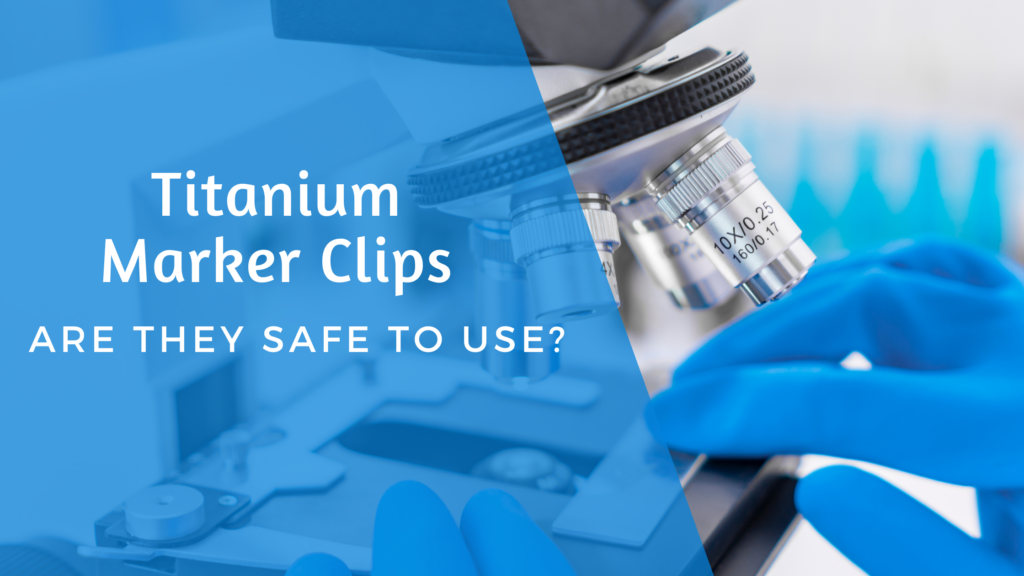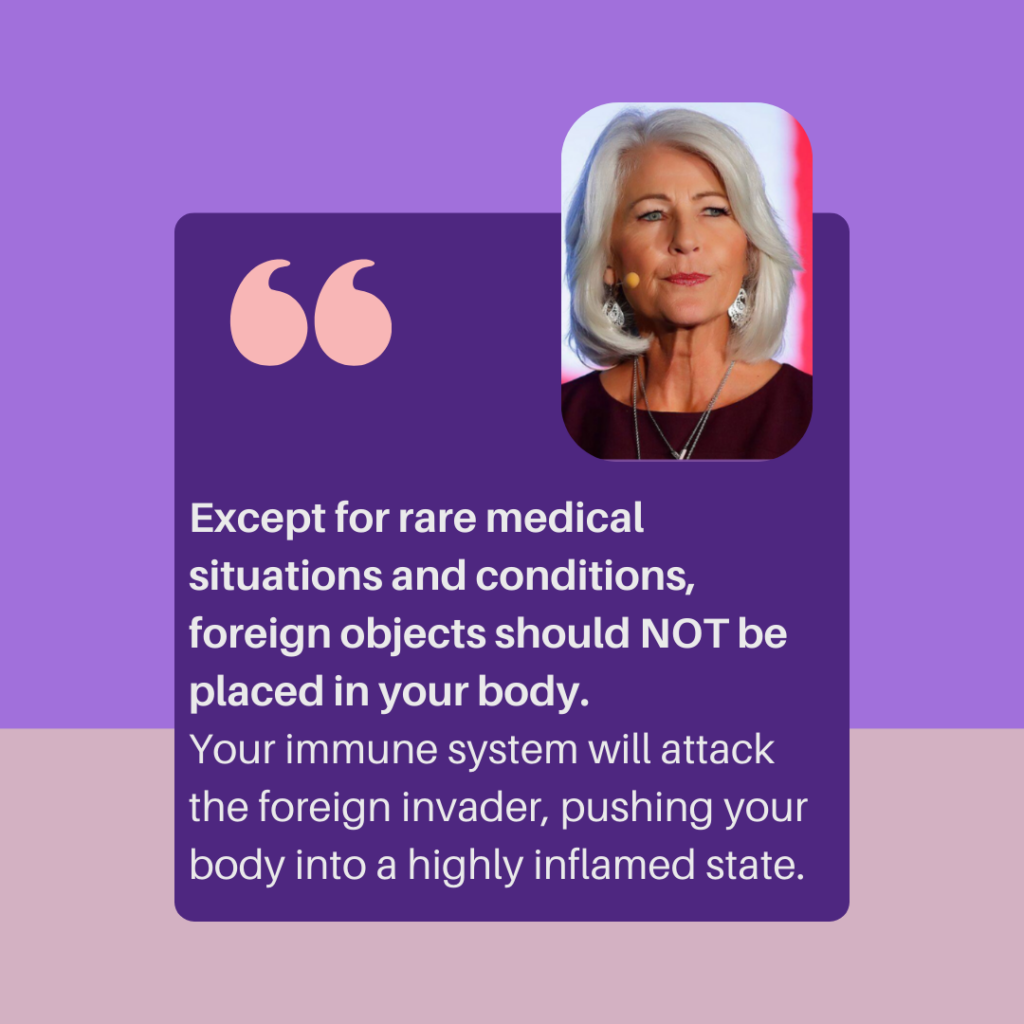

Please note: This blog is purely for informational purposes and to give you a few things to consider before deciding to have a titanium marker clip placed in your breast. As always, I am here to provide evidence-based information and perhaps help you ask questions you didn’t even think about. That being said, I am not your doctor and do not know your unique situation. Therefore, you and your medical team decide what is best for your healing.
“Should I accept a titanium clip during a biopsy?”
I often get this question, so I wrote my thoughts and shared my research via this blog post.
My answer:
Except for rare medical situations and conditions, foreign objects (including a titanium marker clip during a biopsy) should not be placed in your body. Your immune system will attack the foreign invader, pushing your body into a highly inflamed state. This can lead to autoimmune reactions (such as Lupus or Hashimoto’s thyroiditis) because your body thinks it needs to attack something within itself. That is my viewpoint in a nutshell, but to understand my full position and learn more about markers, please keep on reading.

What is a titanium marker clip?
These clips are smaller than a sesame seed and made from the same metal used in joint replacements. They are designed to stay in place, once placed in the breast. This clip acts as a marker to help identify the area of concern for future testing or surgery. Titanium marker clips are said to be biocompatible and safe for future ultrasounds, mammograms, and MRIs. However, many studies and my logic argue otherwise.
You can also opt for a non-metal marker option, but I still advise against putting anything foreign in your body—especially in your breast.
Mammograms
Before we continue, I want to briefly and boldly state that I am not a fan of mammograms because there are so many better and safer options. Mammograms have been found to miss unhealthy tissue up to 48% of the time , especially in dense breasts. accurate. The compression may cause breast cancer cells to spread. Please read this blog post to learn about mammograms and several Dr. V-approved options.
Why are titanium marker clips used?
A clip may be placed during a breast biopsy to make the site so that it can be easily located again for future scans and procedures.
If you choose to use one, you should test to see if you are allergic to nickel or titanium metal.
Can I ask NOT to have one?
YES! This is YOUR healing journey, and you can and must make informed and empowered decisions. If your doctor does not let you, it may be time to find a new one.
You can also choose to have it removed after the biopsy or other procedures and tests.
Adverse reactions to titanium marker clips.
This recent study provides several examples of negative side effects, and I will discuss a few of them here. While the study does say adverse reactions are uncommon, it and many others do not report on autoimmune and other “mysterious” health issues that can arise after placing a foreign object in your body.
Below are a few reactions that have been reported:
- Contact dermatitis
- Severe itching
- Skin rash
- Inflammatory granulomatous reactions
- Failure of the orthopedic hardware
- Intense pain
- Allergic reactions
The FDA has also reported these adverse effects of BioZorb Marker and BioZorb LP Marker on breast tissue. Please read this article to learn more.
- Infection
- Fluid buildup (seroma)
- Device moving out of position (migration)
- Device breaking through the skin (erosion)
- Pain
- Discomfort from feeling the device in the breast.
Breast biopsy marker brands.
Several companies make marker clips, the most common ones listed below. I am not endorsing any of them; I am just laying them out here for you to review.
- Tumark® Breast Biopsy Markers
- MarginMarker™
- Mammotome® Markers
- HydroMARK™
- EasyMark™ Breast Biopsy Marker
Non-metal clip options.
- MammoSTAR®: Made of lyophilized beta-glucan gel, and carbon-coated zirconium oxide. Please review their website to learn more.
- Carbon Medical Technologies: Made with a proprietary pyrolytic carbon-coating process. Please review their website to learn more.
Do I have Biopsy options?
YES! Just like with any test, therapy, or treatment, you have OPTIONS in what you choose and how you prepare your body. Please read this blog post for a full review of the basics of a biopsy, how to prepare, and other options.
Breast Implant Illness.
This is a bit off-topic, but it is still something to consider if you have breast implants or are thinking about getting them. They are not just bags of water and salt; saline and silicone breast implants are bags of toxic soup in your body.
Despite what many doctors say, saline implants are just as dangerous as silicone gel. Saline implants are not sealed airtight, nor are the filing valves 100% secure. Because of this, bodily fluids, yeast, molds, and bacteria can enter the implant, leading to various health issues. Over 50 reported symptoms can result from this, and there is still more to discover. To learn more about fat transfers, breast implants, and breast implant illness (BII), please read this blog post.
Let’s Conquer Together!
From the littlest things, like a marker the size of a sesame seed, to the big chemo question, my self-paced online program will help you consider things you have never thought about. More importantly, it will help you make informed and empowered decisions about your healing journey under the guidance of integrative experts.
Take a look and start working on your plan of action—so that you never have to fear breast cancer again!
Author: Dr. Veronique Desaulniers, better known as Dr. V, is a Doctor of Chiropractic & has 44 years of experience in the wellness industry. For personalized support, please partner with a trained Breast Cancer Conqueror Coach.
